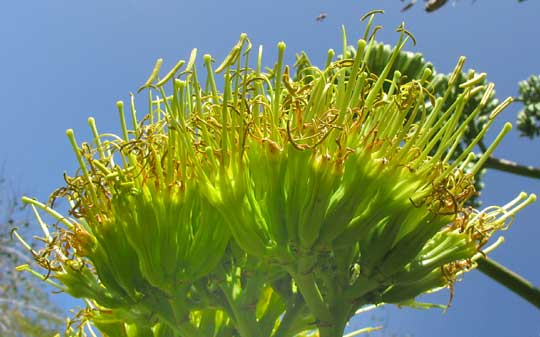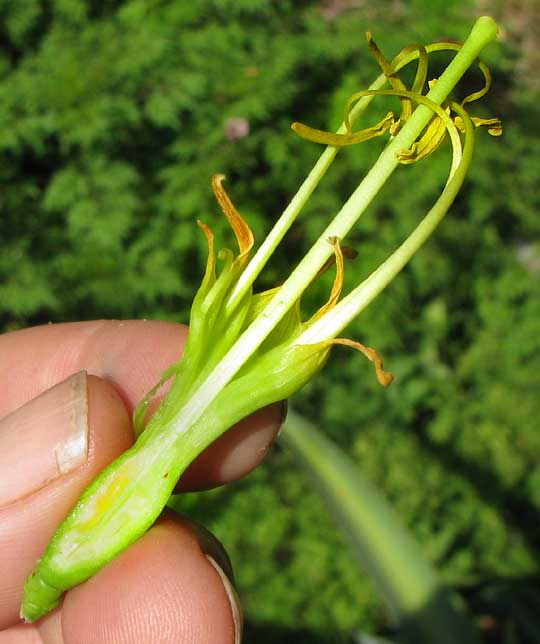Excerpts from Jim Conrad's
Naturalist Newsletter
from the March 21, 2010 Newsletter issued from Hacienda Chichen Resort beside Chichén Itzá Ruins, central Yucatán, MÉXICO; limestone bedrock, elevation ~39m (~128ft), ~N20.676°, ~W88.569°
AGAVE FLOWERING
At Hacienda Chichen's pretty entrance an agave is very conspicuously flowering, as you can see below:

Two agaves are shown but only the one in the back is flowering. That inflorescence stands about eight feet tall (2.5m). Some agave species bloom from year to year, others at intervals, and others only once. This species grows for years, then flowers, and dies. All is not lost, however, because as the plant matures it produces basal shoots that later will replace the dead plant, plus these shoots easily root when transplanted elsewhere.
This is AGAVE DESMETTIANA, usually referred to by its technical name in English by anyone speaking of it with enough savvy and interest to distinguish it from the many other agave species. Some would call it Century Plant or Maguey, but those names are better reserved for another agave species, one with larger, thicker leaves but a similarly giant inflorescence, Agave americana.
In the above picture you can see how within the inflorescence individual blossoms are clustered in well separated groupings. You can see one such cluster below:

Below, you can see just how big a single flower is. In that picture one side of the flower has been removed to reveal the oval ovary at the flower's bottom.

The ovary is topped by a thick, stiff, whitish style terminating in a rounded stigma. In agave flowers six stamens are attached to the walls of a funnel-shaped perianth. Perianth is the word used when a blossom's calyx and corolla are merged or indistinguishable from one another. In the picture the slender, stiff, greenish, incurving things are the stamens' stalk-like filaments, and each filament is terminated by a yellowish, banana-like anther, which splits open at maturity to release pollen.
Nowadays most references place agaves in their own family, the Agavaceae, but some sink the agave family into the newly recognized and expanded Asparagus Family, the Asparagaceae. If you think about it, the above agave flower is indeed structured somewhat like an asparagus flower, only much, much larger.
Agave desmettiana is a native Yucatec plant now grown worldwide in frost-free areas, in pots and urban gardens, in full sun. I find it growing here and there in wild areas but can never decide whether they are natural populations or plantings abandoned long ago. Besides its pretty shape and ease to grow, one reason Agave desmettiana is so widely planted is that its blades are spineless. However, its reddish brown blade tips are hard and sharp, very capable of puncturing an arm or leg.